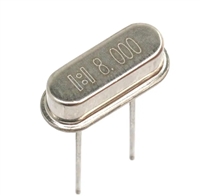AD9020
noise. The noise is the sum of all other spectral components,
including harmonic distortion, but excluding dc.
THEORY OF OPERATION
Refer to the AD9020 block diagram. As shown, the AD9020
uses a modified “flash,” or parallel, A/D architecture. The
analog input range is determined by an external voltage refer-
ence (+VREF and –VREF), nominally 1.75 V. An internal
resistor ladder divides this reference into 512 steps, each rep-
resenting two quantization levels. Taps along the resistor ladder
(1/4REF, 1/2REF and 3/4REF) are provided to optimize linearity.
Rated performance is achieved by driving these points at 1/4,
1/2, and 3/4, respectively, of the voltage reference range.
Good receiver design minimizes the level of spurious signals
in the system. Spurious signals developed in the ADC are the
result of imperfections (nonlinearities, delay mismatch, vary-
ing input impedance, etc.) in the device transfer function.
In the ADC, these spurious signals appear as Harmonic Dis-
tortion. Harmonic Distortion is also measured with an FFT
and is specified as the ratio of the fundamental component of
the signal (rms amplitude) to the rms value of the worst-case
harmonic (usually the 2nd or 3rd).
The A/D conversion for the nine most significant bits (MSBs)
is performed by 512 comparators. The value of the least sig-
nificant bit (LSB) is determined by a unique interpolation
scheme between adjacent comparators. The decoding logic
processes the comparator outputs and provides a 10-bit code
to the output stage of the converter.
Two-Tone Intermodulation Distortion (IMD) is a frequently
cited specification in receiver design. In narrow-band receiv-
ers, third-order IMD products result in spurious signals in
the passband of the receiver. Like mixers and amplifiers, the
ADC is characterized with two, equal-amplitude, pure input
frequencies. The IMD equals the ratio of the power of either
of the two input signals to the power of the strongest third-
order IMD signal. Unlike mixers and amplifiers, the IMD
does not always behave as it does in linear devices (reduced
input levels do not result in predictable reductions in IMD).
Flash architecture has an advantage over other A/D architec-
tures because conversion occurs in one step. This means the
performance of the converter is primarily limited by the speed
and matching of the individual comparators. In the AD9020,
an innovative interpolation scheme takes advantage of flash
architecture but minimizes the input capacitance, power and
device count usually associated with that method of conversion.
Performance graphs provide typical harmonic and SNR data
for the AD9020 for increasing analog input frequencies. In
choosing an A/D converter, always look at the dynamic range
for the analog input frequency of interest. The AD9020
specifications provide guaranteed minimum limits at three
analog test frequencies.
These advantages occur by using only half the normal num-
ber of input comparator cells to accomplish the conversion.
In addition, a proprietary decoding scheme minimizes error
codes. Input control pins allow the user to select from among
Binary, Inverted Binary, Two’s Complement and Inverted
Two’s Complement coding (see Table I).
Aperture Delay is the delay between the rising edge of the
ENCODE command and the instant at which the analog input is
sampled. Many systems require simultaneous sampling of
more than one analog input signal with multiple ADCs. In
these situations, timing is critical and the absolute value of the
aperture delay is not as critical as the matching between devices.
APPLICATIONS
Many of the specifications used to describe analog/digital
converters have evolved from system performance require-
ments in these applications. Different systems emphasize
particular specifications, depending on how the part is used.
The following applications highlight some of the specifications
and features that make the AD9020 attractive in these systems.
Aperture Uncertainty, or jitter, is the sample-to-sample variation in
aperture delay. This is especially important when sampling high
slew rate signals in wide bandwidth systems. Aperture uncertainty
is one of the factors that degrade dynamic performance as the ana-
log input frequency is increased.
Wideband Receivers
Radar and communication receivers (baseband and direct IF
digitization), ultrasound medical imaging, signal intelligence
and spectral analysis all place stringent ac performance require-
ments on analog-to-digital converters (ADCs).
Digitizing Oscilloscopes
Oscilloscopes provide amplitude information about an observed
waveform with respect to time. Digitizing oscilloscopes must
accurately sample this signal, without distorting the information
to be displayed.
Frequency domain characterization of the AD9020 provides sig-
nal-to-noise ratio (SNR) and harmonic distortion data to
simplify selection of the ADC.
One figure of merit for the ADC in these applications is Effective
Number of Bits (ENOBs). ENOB is calculated with a sine wave
curve fit and equals:
Receiver sensitivity is limited by the Signal-to-Noise Ratio of
the system. The SNR for an ADC is measured in the fre-
quency domain and calculated with a Fast Fourier Transform
(FFT). The SNR equals the ratio of the fundamental compo-
nent of the signal (rms amplitude) to the rms value of the
ENOB = N – LOG2 [Error (measured)/Error (ideal)]
N is the resolution (number of bits) of the ADC. The measured
error is the actual rms error calculated from the converter out-
puts with a pure sine wave input.
The Analog Bandwidth of the converter is the analog input fre-
quency at which the spectral power of the fundamental signal is
reduced 3 dB from its low frequency value. The analog band-
width is a good indicator of a converter’s stewing capabilities.
REV. C
–6–






 资料手册解读:UC3842参数和管脚说明
资料手册解读:UC3842参数和管脚说明

 一文带你了解无源晶振的负载电容为何要加两颗谐振电容CL1和CL2
一文带你了解无源晶振的负载电容为何要加两颗谐振电容CL1和CL2

 玻璃管保险丝与陶瓷管保险丝:区别与替代性探讨
玻璃管保险丝与陶瓷管保险丝:区别与替代性探讨

 PCF8574资料解读:主要参数分析、引脚说明
PCF8574资料解读:主要参数分析、引脚说明
